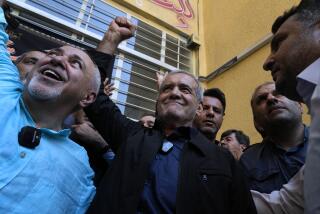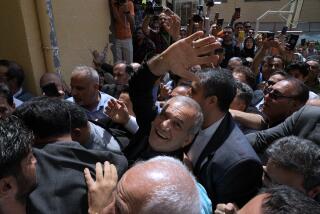Friday isn’t just for prayers in Iran. For car enthusiasts, it’s also race day
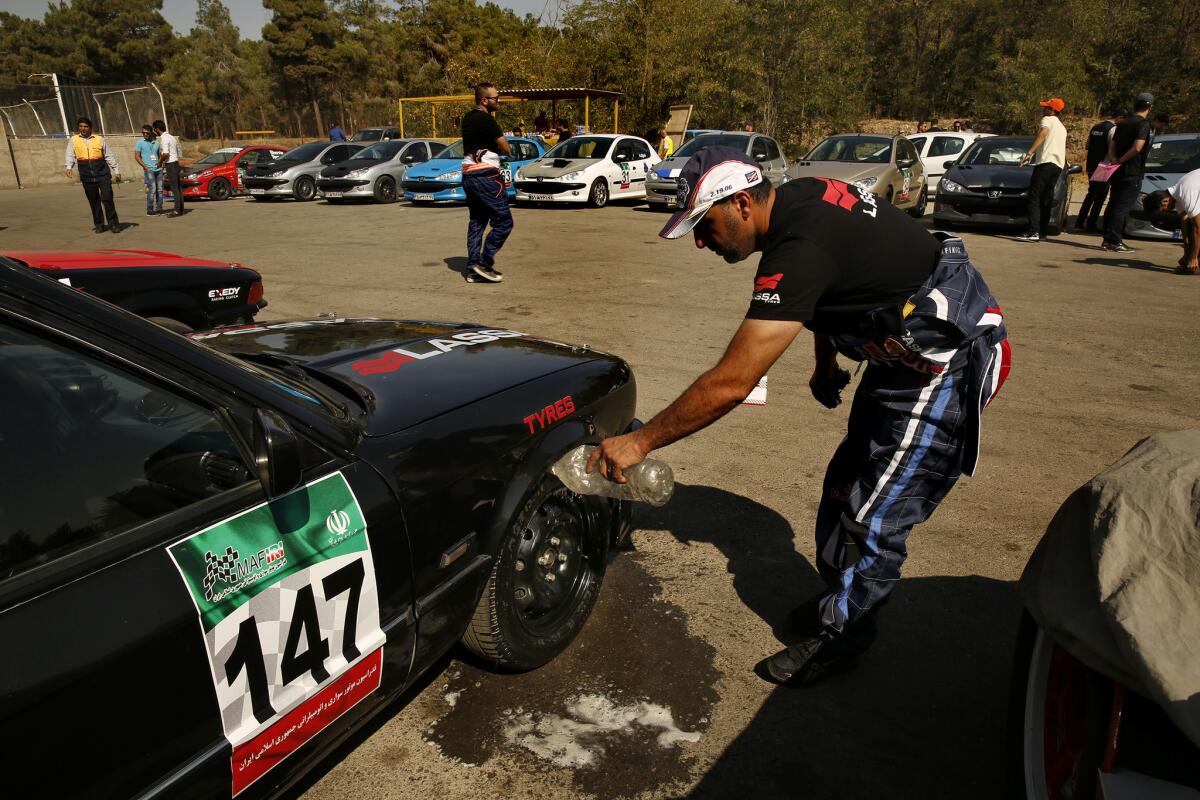
Reporting from Tehran — Mahamad Reza Rohi ducked behind the door of his tricked-out Ford hatchback, slipped out of his street clothes and climbed into a red jumpsuit fresh out of the dry cleaner’s plastic.
The guys in his pit crew — buddies from the Tehran suburbs — were making quick work of breakfast: cream cheese and discs of flatbread spread out on newspaper across the shiny hood of the Ford.
More cars pulled into the gravel lot: Toyotas, Hondas, Peugeots, Iranian-made sedans and the occasional BMW. The morning stillness over the tree-filled park was obliterated by the thrum of engines and the screech of tires.
Friday is not just for prayers in Iran. For a small community of car enthusiasts, it is also race day.
“We do it for love,” said Rohi, a 30-year-old civil servant who is a fixture in the weekly amateur drag races hosted by the Motorcycle and Automobile Federation of the Islamic Republic of Iran.
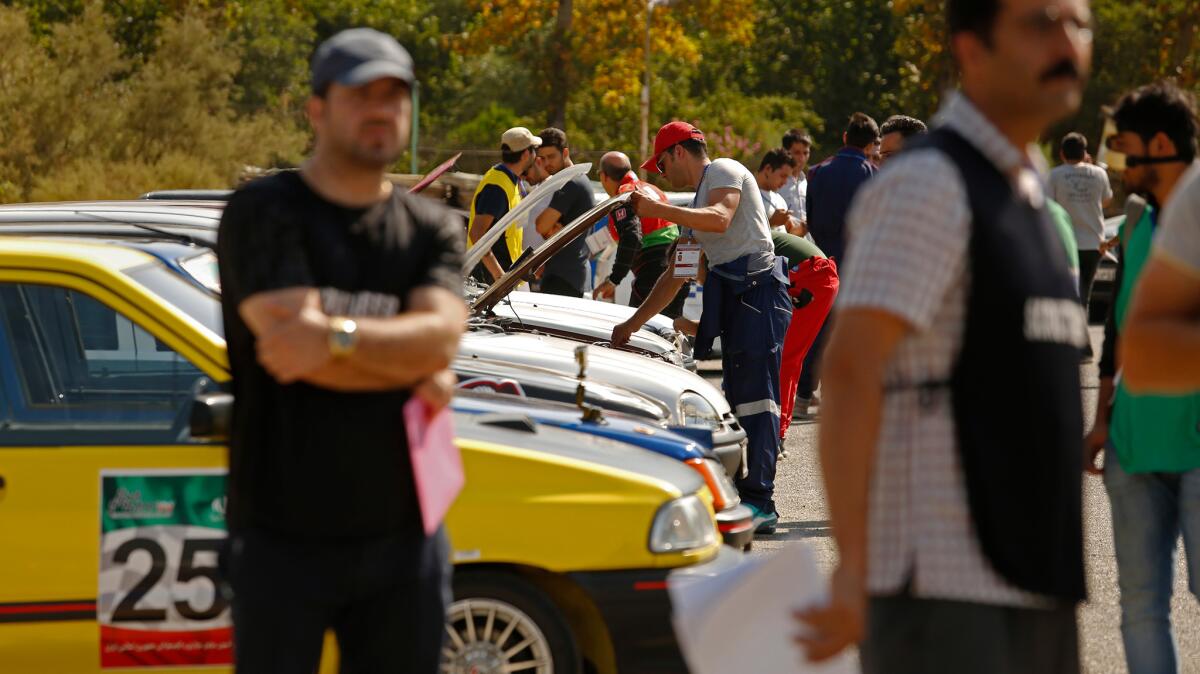
In an economy laid low by international sanctions, drag races, even amateur ones, would at first seem like an unaffordable luxury. Just that day, inside a grand hall at the other end of town, a turbaned, gray-bearded cleric was lecturing about the virtues of austerity as he led hundreds of worshipers in weekly prayers.
But Tehran is home to a serious car culture, which can be seen on its clogged highways and — as in Havana, another city long isolated from the world economy — in the mechanics who manage to keep decades-old vehicles chugging along.
Most of the 60-odd stock cars at the racetrack outside Azadi Stadium, on Tehran’s western edge, were a decade old or older. Many were outfitted by the drivers themselves, some with exposed wires snaking down the consoles.
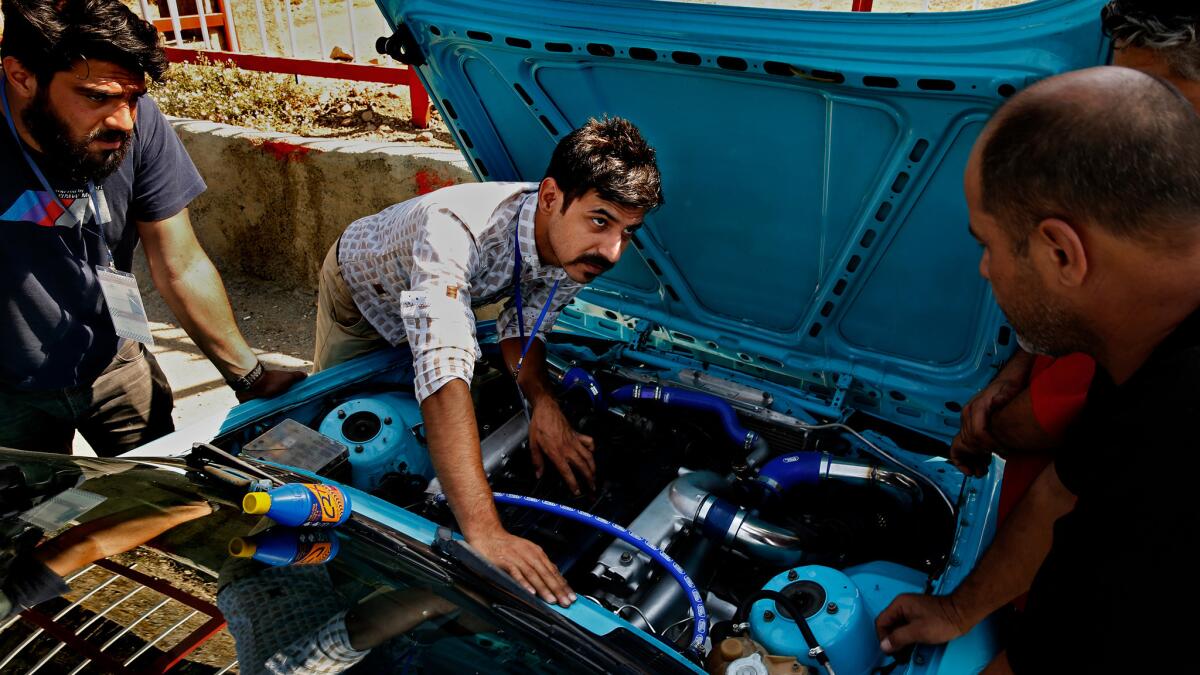
Rohi grew up with fast cars. He idolized his father, a decorated driver who often refereed at the races, which have been running for more than two decades.
The tires, gearbox, engine — everything but the body, really — were ripped out of Rohi’s Ford Festiva. He spent about $10,000 on an engine he located in Dubai, removed the rear seats to reduce weight and scavenged other parts from local garages.
“I save money and I cut my other expenses to do what I love to do,” he said. “I’m single; I don’t have any children.”
He patted the hood of his Ford lovingly.
“This is my wife,” he said, his friends howling with laughter.
Two things were in evidence on race day. One was the disposable income that marked the drivers as members of a privileged middle class. The other was testosterone.
A few hundred spectators — nearly all of them men — packed into bleachers in the late morning, a sheet-metal awning providing little respite from the summer sun. There was a separate seating area with a handful of women, mostly wives or girlfriends of the drivers.
In a grassy pit area separated from the track by a chain-link fence, Alireza Emamgholipour, a 29-year-old with spiked hair and knockoff Diesel wraparounds, stood over his modified gray Peugeot, eyeing a new set of tires.
A mechanic, Emamgholipour poured the profits from his garage in western Tehran into his own car, a modest 10-year-old sedan that looked more like a taxi than a speed demon. But inside he had changed the suspension, brakes and gearbox, and installed a four-cylinder Japanese engine.
He cranked the ignition, eliciting a low roar from under the hood.
“Cars were my obsession as a child,” he said. “You don’t give that up very easily.”
Nearly all the drivers acknowledged that parts were hard to come by. Iran’s domestic automobile industry, once the envy of the Middle East, churns out spares, but serious drivers prefer costlier, foreign-made parts.
My wife tolerates it. It’s a lot of late nights in the garage, but she doesn’t complain.
— Hadi Khalethi, who has modified a Honda Civic
Hadi Khalethi, who runs an interior design company, said it took nearly two years to track down the engine he wanted for his Honda Civic. His main innovation, he said, was a large silver box where the rear seats used to be — a gas tank fashioned from aluminum, to reduce drag.
He did not want to estimate how much he had spent on the car.
“My wife tolerates it,” Khalethi said. “It’s a lot of late nights in the garage, but she doesn’t complain.”
There is little financial reward in this club. Members pay about $100 annually in dues, and $35 to enter a competition. Winners get trophies, but rarely any cash.
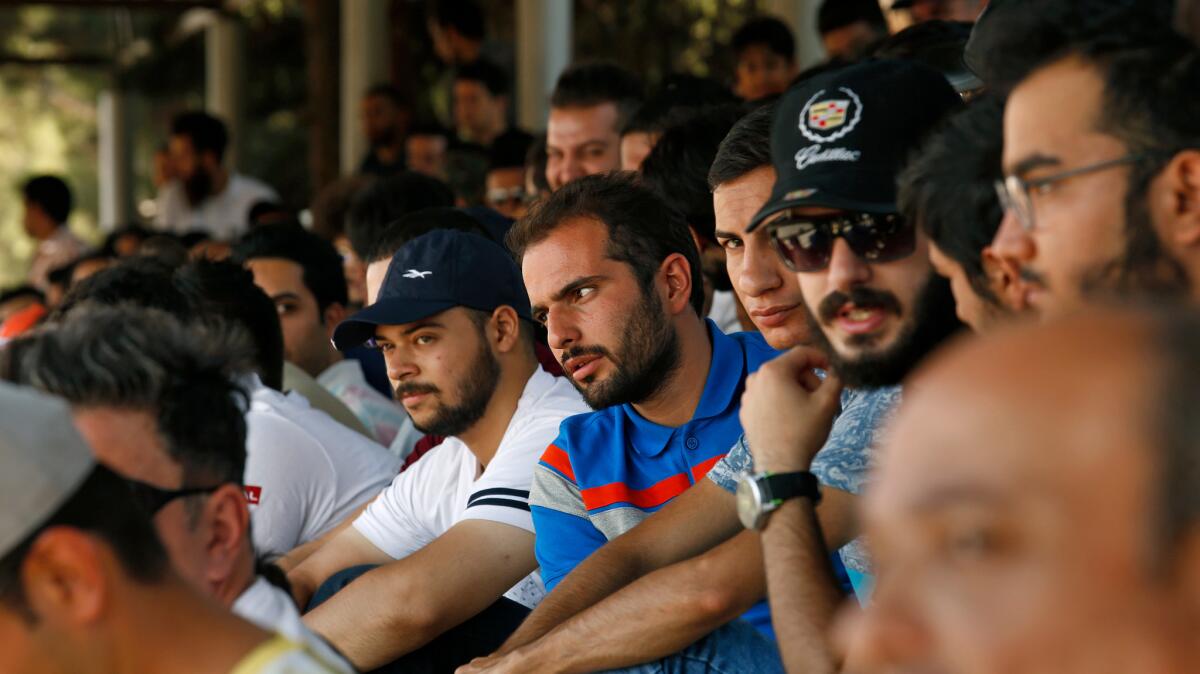
The first pair of cars stood at the starting line, separated by judges who watched an electronic clock. The starter went off and the drivers kicked into gear, speeding a quarter-mile down the length of the track in about 10 seconds. That would be more than a whisker behind the U.S. stock car record of 6.455 seconds, set last year, but it was plenty fast for these drivers.
Standing behind the fence, Sina Mustatab, 27, was sweating in his jumpsuit. A self-employed computer technician, he watched the races for several years before entering this one, his first.
He and a friend worked for nine months on his box-shaped Saipa compact, one of the few Iranian-made vehicles to enter. He poured $7,000 into parts and an engine from Dubai, and cut a hole in the hood to add another exhaust pipe.
Now the humble Saipa roared. Edging up to the track, Mustatab donned a helmet, though the driver alongside him chose not to wear one.
“You’ve seen the traffic in Tehran,” he said, sliding behind the wheel. “There is nowhere else in the city that you can drive this fast.”
Mostaghim is a special correspondent.
Follow @SBengali on Twitter for news from South Asia.
ALSO:
Dogs, Deepak Chopra, Instagram weddings and other signs of change among Iran’s middle class
‘Havana Motor Club’ richly profiles Cuba’s covert racing scene
More to Read
Sign up for Essential California
The most important California stories and recommendations in your inbox every morning.
You may occasionally receive promotional content from the Los Angeles Times.
